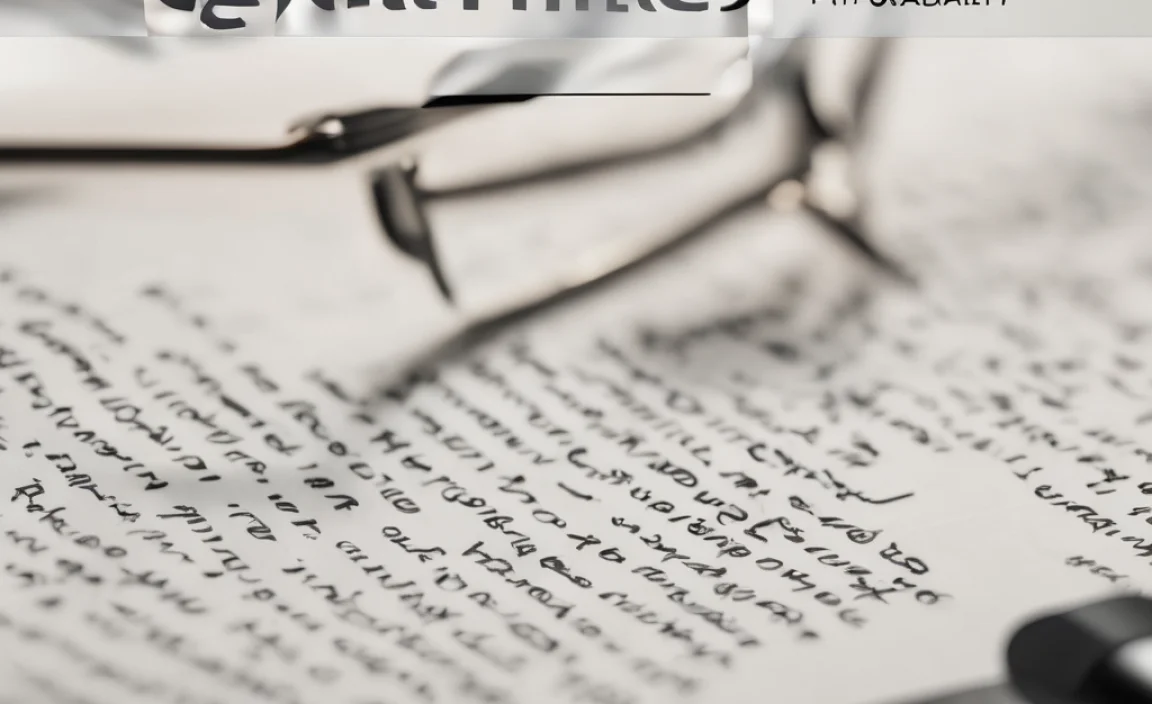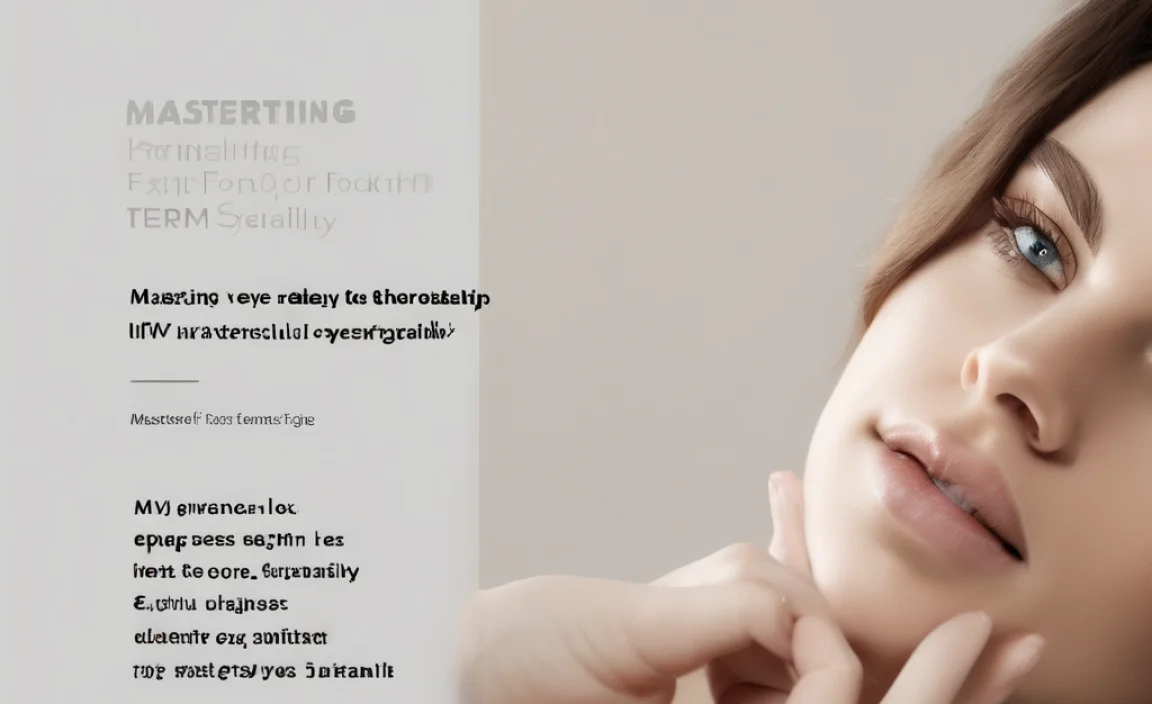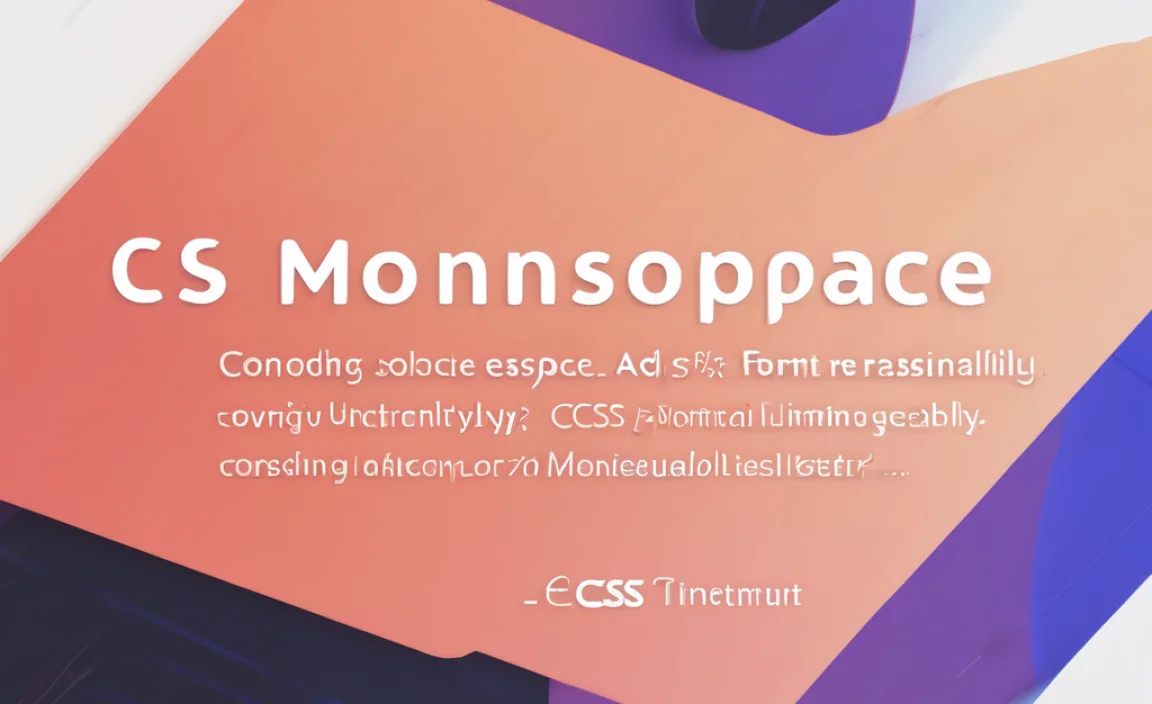Plantin font is a classic, highly readable serif typeface perfect for creating elegant and timeless designs. It excels in print and digital media due to its balanced proportions and clear letterforms, making it an excellent choice for body text, headings, and branding where a touch of traditional sophistication is desired.
Looking for a font that blends timeless elegance with rock-solid readability? You’ve come to the right place! Choosing the perfect font can feel like a treasure hunt, especially when you want something that looks good and communicates clearly. Many designers worry about picking a font that’s either too trendy or too difficult to read, leading to design frustration. But don’t worry, we’re here to help you discover a true gem in the world of typography. This guide will introduce you to Plantin font, exploring why it’s a fantastic choice for a wide range of projects. Get ready to understand why this serif classic might just become your new go-to!
What is Plantin Font? A Serif Classic Explained
Plantin font is a serif typeface with a rich history, designed in 1913 by the Monotype Corporation, with significant input from Frank Hinman Pierpont. It was based on a typeface originally cut by Christophe Plantin, a renowned printer in the 16th century. This lineage gives Plantin a distinct connection to the golden age of printing, emphasizing clarity and readability above all else.
The Anatomy of Plantin: Key Characteristics
Plantin stands out because of its specific design features, which contribute to its enduring appeal and functionality. Understanding these elements helps appreciate why it’s so effective:
Open Counterforms: The enclosed spaces within letters like ‘o’, ‘e’, and ‘p’ (known as counters) are relatively open. This helps prevent ink from filling them in, especially in smaller print sizes, enhancing legibility.
Moderate Contrast: It features subtle variations in stroke thickness, unlike some high-contrast typefaces. This moderate contrast makes it comfortable to read for extended periods.
Solid, Sturdy Serifs: The serifs (the small strokes at the ends of main strokes) are robust and well-defined. They provide a clear baseline for the eye and add a sense of stability and tradition.
Clear Differentiation of Characters: Letters like ‘i’ and ‘l’, or ‘n’ and ‘m’, have distinct shapes that are easy to tell apart, reducing confusion for the reader.
Generous X-Height: The height of lowercase letters (like ‘x’) is substantial relative to the ascenders (parts of ‘h’, ‘l’, ‘t’) and descenders (parts of ‘p’, ‘g’, ‘y’). This contributes significantly to its readability.
A Brief History: From Renaissance to Digital Age
The roots of Plantin stretch back to the 16th century. Christophe Plantin, a Flemish printer, commissioned typefaces renowned for their legibility and classic proportions. The Monotype Corporation’s revival and expansion of this design in the early 20th century aimed to create a modern typeface that captured the essence of these historic letterforms for contemporary printing needs. This historical connection imbues Plantin with a sense of gravitas and trust.
Why Choose Plantin Font? Its Strengths and Benefits
When considering a typeface for your next project, Plantin offers a compelling set of advantages, making it a versatile and reliable choice for designers, writers, and businesses alike. Its strengths lie in its timeless design principles and practical application.
Unparalleled Readability
This is perhaps Plantin’s strongest feature. Its open counters, moderate contrast, and clear letterforms make it exceptionally easy to read, even at small sizes or when used for long blocks of text. This is crucial for:
Books and Long-Form Content: Readers can easily digest lengthy articles, novels, or reports without eye strain.
Websites and Digital Reading: On screens, where readability can be a challenge, Plantin holds up remarkably well, offering a comfortable reading experience.
Print Materials: From brochures to reports, its clarity ensures your message is received without difficulty.
Timeless Elegance and Sophistication
Plantin carries an air of classic sophistication without appearing dated. Its design is rooted in historical printing traditions, giving it a sense of authority and trustworthiness. This makes it ideal for:
Branding: Companies aiming for a sophisticated, established, or trustworthy image often turn to Plantin.
Formal Documents: Legal papers, academic publications, and official communications benefit from its gravitas.
Luxury Goods and Services: Brands that want to convey quality and premium status can use Plantin effectively.
Versatility Across Media
While deeply rooted in print, Plantin has proven itself to be highly adaptable to various design applications. It functions beautifully in both digital and print environments.
Print: Essential for books, magazines, newspapers, and marketing collateral.
Web: Excellent for website body text, blog posts, and user interfaces where extended reading is common.
Branding: Suitable for logos, stationery, and other brand identity elements.
A Solid Foundation for Design
Plantin’s straightforward, unpretentious design provides a stable foundation for your layout. Its neutral yet distinctive character allows other design elements, such as imagery and color, to stand out without clashing with the typography. It acts as a reliable workhorse, letting your content shine.
When to Use Plantin Font: Practical Applications
Plantin isn’t just a pretty face; it’s a highly functional typeface suited for a variety of contexts where clarity and a touch of classic style are paramount. Here are some practical scenarios where Plantin truly shines:
1. Long-Form Reading Material
Books: Whether fiction or non-fiction, Plantin’s readability ensures readers can immerse themselves in the story or information without fatigue. Many classic novels and academic texts have used variations of this style.
E-books: Its open design translates well to digital screens, making it a great choice for e-readers and digital publications.
Magazines and Newspapers: Traditionally, serif fonts like Plantin have been the backbone of print publications for their ability to handle dense columns of text.
2. Corporate and Brand Identity
For businesses aiming to project an image of stability, trust, and professionalism, Plantin is an excellent choice.
Annual Reports & Financial Documents: The font’s inherent gravity lends credibility to important financial information.
Law Firm Branding: Many legal practices opt for serif fonts like Plantin to convey seriousness and established expertise.
Luxury Brands: When paired with sophisticated visuals, Plantin can elevate a brand’s perceived value.
Non-Profit Organizations: To signal trustworthiness and a commitment to their cause.
3. Educational and Academic Content
Institutions and educators often rely on typefaces that facilitate learning and comprehension.
Textbooks and Study Guides: Clear typography is essential for students to absorb complex information.
Academic Journals: Research papers and scholarly articles demand legibility for detailed analysis.
University Websites: Conveying a sense of tradition and academic rigor.
4. Websites and Digital Interfaces
While sans-serif fonts often dominate the web, Plantin offers a valuable alternative for specific areas.
Blog Body Text: If your blog features long-form content or aims for a more literary or established feel, Plantin is a superb choice.
Editorial Websites: Publications that value a classic, literary aesthetic.
User Interface (UI) Elements: For certain applications, particularly those with a more formal or traditional design, Plantin can provide a comfortable reading experience. A good example of a modern digital implementation is Google Fonts API offering various weights. You can explore its availability and weights at Google Fonts.
5. Invitations and Personal Correspondence
For events and personal communications where a touch of elegance is desired, Plantin can add a refined feel.
Wedding Invitations: Its classic charm suits formal occasions beautifully.
Personal Stationery: Adds a touch of sophistication to letters and notes.
How to Use Plantin Font Effectively: Tips for Designers
Incorporating Plantin into your designs is straightforward, but a few tips can help you maximize its impact and avoid common pitfalls.
1. Pair it Wisely
While Plantin is a great all-rounder, it pairs beautifully with other font types to create contrast and hierarchy.
With Sans-Serifs: For headings or call-to-action elements, a clean, modern sans-serif font can provide a striking contrast. Think of pairing Plantin body text with a bold geometric sans-serif for headlines.
With Display Fonts: If you need a more decorative or attention-grabbing headline, ensure it complements Plantin’s classic feel rather than clashing with it.
2. Leverage Different Weights and Styles
Most digital versions of Plantin come in various weights (light, regular, bold, etc.) and sometimes italics. Use these to create visual hierarchy:
Headings: Use bold or semibold weights for clear section titles.
Emphasis: Employ italics for subtle emphasis within paragraphs or for foreign words.
Body Text: Stick to the regular or book weight for optimal readability.
3. Consider the Context and Brand Voice
Always ensure Plantin aligns with the overall message and tone you want to convey.
Modern & Techy: While usable, Plantin might not be the first choice for brands heavily focused on cutting-edge innovation. A strong sans-serif might be more fitting.
Traditional & Trustworthy: This is where Plantin excels. It naturally communicates reliability and a established presence.
4. Pay Attention to Line Spacing (Leading)
Adequate line spacing is crucial for serif fonts, especially Plantin, to maintain comfort.
General Rule: Aim for body text line spacing to be about 120-150% of the font size. For example, if your font size is 10pt, try 12pt to 15pt leading.
Check Readability: Always test your spacing with actual text to ensure it flows well.
5. Optimize for Screen vs. Print
Screen: Ensure sufficient contrast between text and background. Consider slightly larger font sizes and generous line spacing for web use. Many browser and OS text rendering engines are quite good at displaying serifs like Plantin.
Print: Plantin is historically optimized for print. It typically renders beautifully on paper, even at smaller sizes.
Plantin Font Comparisons: Serif vs. Sans-Serif and Beyond
Understanding where Plantin fits into the broader typographic landscape helps in making informed design decisions. Let’s compare it to its main counterpart, sans-serif, and other font categories.
Plantin (Serif) vs. Sans-Serif Fonts
The fundamental difference lies in the presence or absence of serifs.
| Feature | Plantin (Serif) | Sans-Serif Fonts (e.g., Arial, Helvetica, Open Sans) |
| :————— | :————————————————- | :————————————————- |
| Serifs | Has small decorative strokes (serifs) at letter ends. | Lacks serifs; strokes end cleanly. |
| Appearance | Traditional, classic, elegant, authoritative. | Modern, clean, minimalist, approachable. |
| Readability | Excellent for long blocks of text, especially in print. Guides the eye along the line. | Highly readable on screens, especially at small sizes. Clear and direct. |
| Best For | Books, magazines, academic papers, formal branding. | Web interfaces, mobile apps, headlines, signage. |
| Perception | Established, trustworthy, sophisticated. | Contemporary, functional, direct. |
Example: Think of a classic novel (Plantin) versus a modern tech company’s app interface (…sans-serif).
Plantin vs. Other Serif Fonts
While Plantin is a superb serif choice, other serifs offer different feels.
Garamond: Older, more delicate, and often considered more “poetic” or refined. It can be less robust for very small text.
Times New Roman: Designed for newspapers, it’s very common, highly legible, but can sometimes feel ubiquitous or less distinctive than Plantin.
Georgia: Designed specifically for screen readability, it has a more robust and slightly humanist feel than Plantin.
Plantin strikes a balance – it has the classic elegance of Garamond but the sturdiness and readability of Times New Roman, making it a more versatile digital and print performer than many other serifs.
Plantin vs. Display and Script Fonts
Display Fonts: These are highly stylized and designed for impact at large sizes, like headlines or posters. They are generally not suitable for body text.
Script Fonts: Mimic handwriting or calligraphy. They are decorative and best used sparingly for accents or specific branding needs.
Plantin, as a workhorse serif, provides the essential foundation for text that needs to be read and understood, differentiating it from the more decorative categories.
Where to Find and Use Plantin Font
Plantin font is widely available and can be integrated into your design workflow with ease.
Availability and Licensing
Adobe Fonts: If you subscribe to Adobe Creative Cloud, Plantin (often in variants like “Goudy Oldstyle,” which is closely related) is usually included and can be activated for desktop and web use.
Monotype: The company that originally developed it offers various versions for commercial licensing.
Google Fonts: While not directly named “Plantin,” fonts like “Noto Serif” or “Merriweather” share similar characteristics of readability and classic serif design, and are freely available. Sometimes variants or closely related historical revivals appear.
Type Foundries: Independent foundries might also offer their interpretations or related historical typefaces.
Technical Notes for Designers
File Formats: Look for OpenType (.otf) or TrueType (.ttf) formats for broad compatibility. Web font formats (.woff, .woff2) are necessary for website implementation.
* Licensing: Always check the specific license agreement. Free fonts from Google Fonts are typically very permissive for both personal and commercial use. Commercial fonts require purchase, often based on the number of users or projects.
Frequently Asked Questions about Plantin Font
What is Plantin font best used for?
Plantin font is excellent for long blocks of text, such as books, magazines, reports, and website body content, due to its high readability. It’s also a strong choice for branding that needs to convey trust, elegance, and tradition.
Is Plantin font free to use?
Availability varies. While some versions or closely related fonts might be free on platforms like Google Fonts, commercial versions and specific weights are typically licensed and require purchase through foundries like Monotype.
How does Plantin font compare to Times New Roman?
Both are highly readable serifs. Plantin is often considered a bit more classic and robust, with slightly more open letterforms, making it very friendly for extended reading. Times New Roman, designed for newspapers, can sometimes feel a bit more condensed and ubiquitous.
Can I use Plantin font for my website?
Yes, absolutely! If you have access to a web-font version of Plantin (e.g., through Adobe Fonts or a licensed web font) or a suitable free alternative with a similar feel, it can provide a sophisticated and highly readable experience for your website’s text.
What kind of feel does Plantin font give off?
Plantin font evokes a feeling of timelessness, tradition, elegance, and trustworthiness. It’s often associated with quality, reliability, and classic design principles.
Is Plantin a serif or sans-serif font?
Plantin is a serif font. This means it features the small decorative strokes, or “serifs,” at the ends of the main strokes of its letters.
What are the main advantages of using Plantin font?
The main advantages are its superior readability for long texts, its timeless and elegant aesthetic, its versatility across print and digital media, and the sense of trust and authority it conveys.
Conclusion: Embracing Plantin for Timeless Design
As we’ve explored, Plantin font is far more than just another typeface; it’s a testament to the enduring power of well-crafted typography. Its historical roots provide a sense of gravitas and authenticity, while its practical design ensures exceptional readability across diverse applications, from the printed page to the digital screen.
Whether you’re a student building your first style guide, a blogger aiming for more engaging content, or a seasoned designer seeking a reliable workhorse for a sophisticated brand, Plantin offers a compelling solution. Its ability to bridge tradition and modernity, coupled with its inherent legibility, makes it an invaluable tool in any designer’s arsenal. So, next time you’re faced with a font selection challenge, consider reaching for Plantin. You might just find that this essential serif choice is the perfect fit to bring clarity, elegance, and a touch of timeless quality to your next project.
Happy designing!









